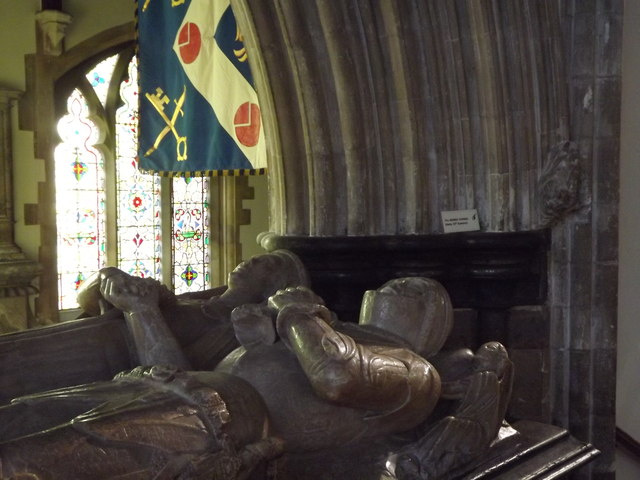 |
| Edmund Tudor Wikipedia Commons |
When she was around three years old, she was married to John de la Pole, but the marriage was annulled three years later. Margaret refused to recognize this marriage when she reached adulthood. She insisted that Edmund Tudor, Earl of Richmond, whom she married at age twelve, was her first husband. Edmund was twenty-four when he married the pre-teen Margaret.
Edmund was the half-brother of King Henry VI. (Edmund's mother, Queen Catherine of Valois, had remarried after her husband King Henry V, died. She chose Owen Tudor, one of her household officers, as her husband, a man of gentle, but not royal, birth.) when Henry VI came to the throne, he recognized his half-brothers with titles, and chose brides of noble birth for them.
 |
| Henry VII as a young man. |
At age thirteen, Margaret found herself pregnant and alone. Her husband had gone off to join the War of the Roses, and he was captured only a few months later. Margaret was seven months pregnant when she learned her husband had died of plague while in captivity.
Margaret gave birth to her only child, Henry Tudor, the future Henry VII. The pregnancy and birth were difficult, and at one point, her life was in jeopardy. Though she would marry twice more, Margaret never became pregnant again, and her contemporaries believed her body had been damaged by giving birth at such a young age.
Margaret was married off again, almost immediately, this time to Henry Stafford, Duke of Buckingham, her second cousin. Her son was taken to live with the Tudor family in Wales. This was not unusual for the era: noble children were often taken off to be raised by other households, who took them on as "wards" and managed their inheritances. Having a ward was a very lucrative business.
She kept in touch with Henry through letters. At age 14, he went into exile in France, while his mother remained in England, fighting fiercely for his rights and claim to the throne.
 |
| Wikipedia Commons |
At court, Margaret plotted with Dowager Queen Elizabeth Woodville to depose the king. The two arranged for Henry's marriage to Elizabeth's daughter, Elizabeth of York, to unite their two houses. Through turmoil, shifting alliances, and battles, Margaret never lost sight of her goal. And finally, Henry won the crown at the Battle of Bosworth. It's said Margaret wept for joy at his coronation.
King Henry VII recognized his mother's worth. His first parliament declared her femme sole, meaning she had independent control of her wealth apart from her husband. This was a very rare status, and it shows how deeply the court respected Margaret's intelligence. She ruled her estates with ruthless efficiency, adding to her wealth and property. But she had a sense of responsibility to those who lived on her lands, improving them by building mills and dams.
As the king's mother, Margaret more-or-less ruled the court. How her daughter-in-law, Elizabeth of York, felt about it is not recorded. At Christmas in 1487, she wore the same robes and coronet as the queen, her actions stating quite clearly she would not accept an inferior position. It was Margaret who codified royal protocol, including every detail of how the queen should give birth, down to the color of the fringe on the pillows.

Margaret now signed her documents Margaret R, often adding the line "et mater Henrici septimi regis Angliæ et Hiberniæ" (Mother of Henry VII, king of England and Ireland). The signature was somewhat sly on Margaret's part. The "R" could stand for "regina (queen)" or "Richmond." I doubt anyone had the courage to challenge it.
Bishop John Fisher was Margaret's chaplain. She was already pious, but he encouraged her religious fervor even further. She wore a hair shirt under her sumptuous robes, attended at least four masses per day along with several hours of prayer, and was strictly observant of religious fasts.
 |
| Wikipedia Commons |
Margaret lived long enough to see her granddaughter and namesake become Queen of Scotland. But she was devastated when her beloved son died. As another sign of the esteem in which she was held, she was appointed as regent for England until Henry VIII became old enough to take the throne.
She died in July, 1509 at the venerable age of sixty-six.
 |
|
under this Creative Commons Licence
|
"... the poor creatures that were wont to receive her alms …the students of both the Universities, to whom she was as a mother; all the learned men of England, to whom she was a very patroness; all the virtuous and devout persons, to whom she was as a loving sister; … all the good priests and clerics, to whom she was a true defendress; all the noble men and women, to whom she was a mirror, an example of honour; all the common people of this realm, for whom she was in their causes a common mediatrix, and took right great pleasure for them."
She is buried in Westminster Abbey in a beautiful tomb.
No comments:
Post a Comment